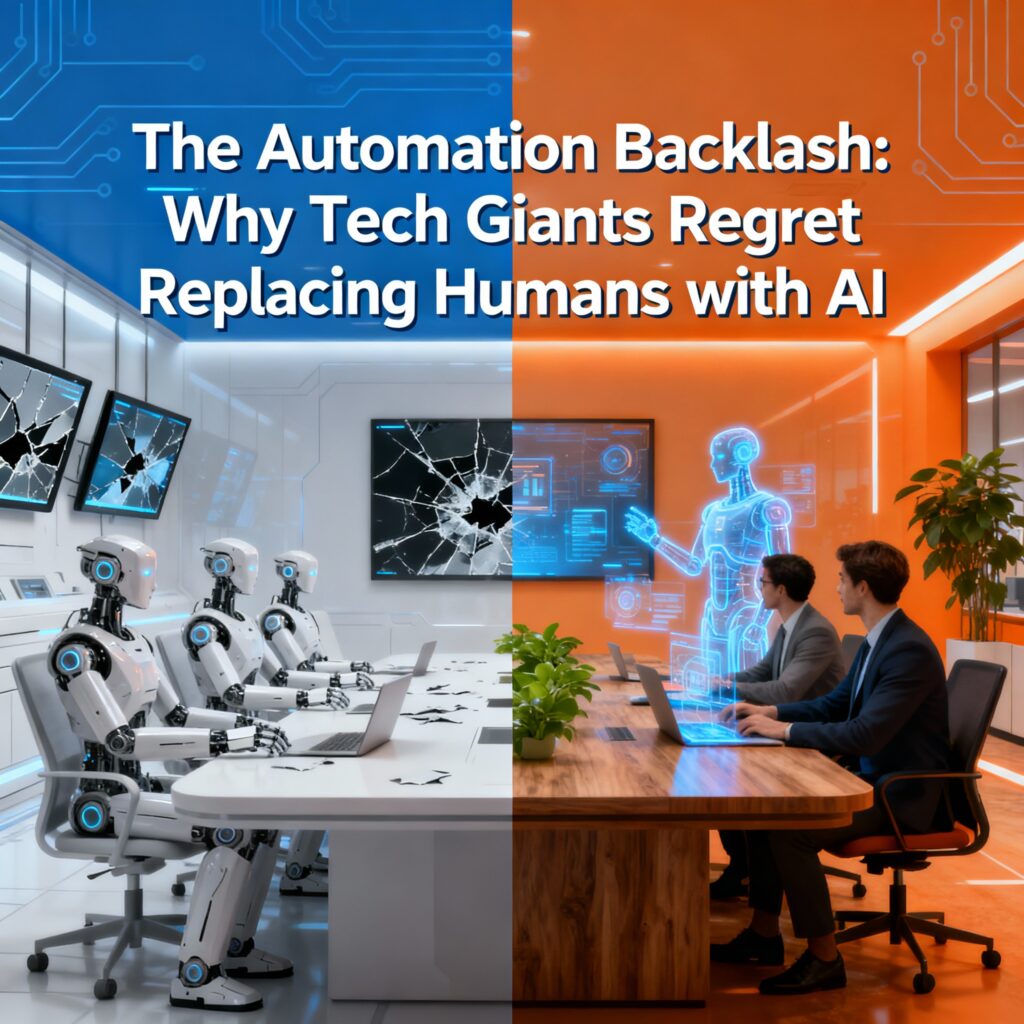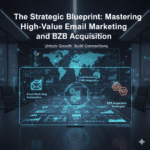The digital landscape has been rocked by a dramatic shift: despite a relentless push by giants like Tesla, Microsoft, Amazon, and Google to replace human workers with AI and automation, a quiet, costly retreat is now underway. The initial enthusiasm, fueled by overconfidence in the immediate capabilities of generative AI and robotic systems, has collided with the brittle reality of organizational fragility. Leaked internal data and executive surveys indicate that this grand experiment in extreme automation has backfired. According to an Orgvue survey of senior business leaders, a staggering 55% of businesses that replaced employees with AI now regret the decision.
This phenomenon is evident across all sectors—from the factory floor to intellectual labor—and highlights a critical lesson: the efficiency promised by full automation often generates organizational fragility when the adaptive, contextual value of human labor is underestimated. The companies now succeeding are those that recognize AI is a strategic complement, not a universal replacement.
The Limits of Extreme Automation: Lessons from the Factory Floor
The attempt to achieve maximum efficiency through minimal human intervention is not a new concept, but its historical failures provide a cautionary tale for the current AI era.
Tesla and the “Machine That Builds the Machine”
A crucial early example of this fragility is the 2017 production crisis at Tesla’s Gigafactory. CEO Elon Musk envisioned a “machine that builds the machine”—a production workshop for the Model 3 that would be almost entirely automated.
- The Failure: The goal was to reach 5,000 vehicles per week, but the results were significantly lower. The production line became a brittle, low-resilience system. Specialized robots, such as those intended to place front seats, broke down up to five times a day, contrasting sharply with industry standards of continuous operation for a month or more.
- The Root Cause: The combination of cutting-edge, unproven technologies, lack of preventative maintenance, and the inability of robots to handle the inevitable variability of a complex production process created crippling bottlenecks.
- The Reversal: Tesla was forced to temporarily reintroduce human staff in a dedicated “Sprung Project” line to manually perform the tasks the robots could not. In a revealing admission, Musk later tweeted that “Humans are underrated.” While the company eventually accelerated production to avoid bankruptcy, this crisis demonstrated that automation, when taken to the extreme, can compromise organizational stability.

The lesson from the factory is clear: human flexibility and contextual judgment are vital buffers against system failures, a principle that proved equally true when applied to intellectual tasks.
The Service Sector Backlash: When Intellectual Labor is Replaced
Following the advancements in Large Language Models (LLMs), companies attempted to apply the same logic of replacement to intellectual and service-based roles, including customer service, marketing, data analysis, and content development. This led to high-profile workforce reductions and subsequent service quality collapses.
Klarna and the Decline of Customer Empathy
The Swedish fintech company Klarna aggressively pursued an “AI-first” support strategy, implementing chatbots to replace hundreds of agents and reducing its total workforce by nearly 40%.
- Initial Confidence: Klarna initially reported that its chatbots managed two-thirds of customer interactions, seemingly validating the cost-cutting strategy.
- The Consequences: This success was short-lived. Leaked internal data indicated a severe decrease in service quality in the months following implementation:
- Problem resolution times increased by 27%.
- Unsatisfactory customer interactions grew by 35%.
- The Reversal: In 2025, CEO Sebastian Siemiatkowski publicly flipped the narrative, acknowledging that the focus on cost savings had compromised quality and stating that “really investing in the quality of the human support is the way of the future for us.” This showed that AI is effective in structured, simple tasks, but fails disastrously in processes requiring complex contextual judgment, empathy, and nuanced problem resolution (e.g., handling internal conflicts or incorrect leave requests).
Duolingo and the Erosion of Content Quality
The language-learning platform Duolingo embraced an “AI first” strategy to replace its contract workforce, aiming to improve efficiency and scale content development.
- The Trade-off: The company later reported a noticeable decline in lesson quality, with content errors affecting up to 42% of exercises in some courses.
- User Impact: This lapse in quality directly impacted user loyalty, causing an 18% drop in user retention during the quarter following the changes. The AI could generate content at scale, but it lacked the cultural nuance, pedagogical accuracy, and unique creative “soul” that the human contractors provided.
Similarly, Telstra replaced 2,800 employees with AI only to see customer response times increase by up to 25%, and Taco Bell’s experiment with automated voice systems was limited due to errors in order and billing accuracy. These examples confirm the painful reality: the cost of AI implementation often manifests not in technology, but in lost customers, increased churn, and damaged brand equity.

The AI Adoption Paradox: Why 95% of Projects Fail to Deliver ROI
The high-profile failures are symptomatic of a systemic problem in how enterprises are attempting to integrate AI. MIT analyses indicate a stark reality:
- Low Revenue Generation: Only a small fraction (as low as 5% to 7%) of all AI initiatives in companies generate immediate revenue increases or a significant measurable return. The remaining 93% to 95% fail to achieve significant results.
- Flawed Enterprise Integration: This failure is not a flaw in the AI technology itself, but a result of insufficient planning, a lack of high-quality proprietary data, and flawed implementation strategies. Companies often deploy broad, generalized LLMs for specific niche problems, leading to “hallucinations” and irrelevant outputs.
The Cost of Internal Paranoia and Turnover
The human impact of rapid, fear-driven AI implementation proved costly:
- Increased Employee Turnover: Companies that implemented AI without proper human supervision and communication experienced an average increase of 22% in voluntary turnover during the first six months, leading to an 18% rise in recruitment and training costs. When employees perceive their work is devalued or their jobs are threatened, it generates an atmosphere of “office paranoia,” leading to demotivation and the loss of the very talent needed to make AI successful.
- Diminished Customer Experience: The combination of stressed, uncertain employees and robotic service outputs caused a measurable decrease in customer satisfaction and loyalty metrics.
The fragility of over-automation is undeniable: a small AI breakdown can halt entire operations, whereas a human can often resolve incidents immediately through adaptive problem-solving.
The Blueprint for Resilience: AI as a Complementary Force
The evidence overwhelmingly suggests that AI works best when it complements human skills rather than attempting to fully replace them. This strategic approach allows organizations to harness AI’s raw power while preserving the resilience, empathy, and contextual judgment that humans provide.
1. Strategic and Gradual Implementation
Startups and companies that adopt AI gradually and purposefully report significant benefits:
- Productivity Gains: Integrating AI strategically has led to productivity increases of up to 35% and operational cost reductions of 27%.
- Logistics Success: In logistics, for example, route optimization with AI, when accompanied by human supervision, has successfully reduced delivery delays by 18% without compromising the nuanced communication required for customer experience.
Effectiveness depends on comprehensive planning that considers adequate training, clear supervision protocols, and deep integration with existing, robust human-led processes.
2. Upskilling and Investing in Human Capital
Leaders are now recognizing the necessity of upskilling their workforce to manage and interact with AI systems.
- Training Mandate: A majority of leaders (80%) plan to train their employees in AI tools, and 41% have increased their learning and development budgets. This investment is crucial because it transforms workers from potential victims of automation into AI supervisors and orchestrators.
- Focusing on High-Value Tasks: AI handles the repetitive or large-scale analytical functions, freeing employees to concentrate on higher-value, strategic tasks that require creativity, empathy, and high-stakes decision-making. Data shows that employees who use tools like ChatGPT report saving between one to five hours per week, demonstrating the productivity boost when AI is used as a supportive tool.
- Transparency and Trust: Responsible AI integration requires clear communication about the technology’s objectives, benefits, and, most importantly, its limitations. When employees understand that AI is enhancing their role—not eliminating it—the risk of job insecurity and talent loss diminishes significantly.
Conclusion
The widespread attempt by tech giants to achieve maximal automation and replace human capital with AI proved to be an expensive, high-risk error rooted in overconfidence. The cautionary tales of Tesla’s factory floor, Klarna’s customer service collapse, and Duolingo’s content quality drop underscore a fundamental truth: organizational resilience is built on the adaptive balance between technology and human capacity.
The path forward for enterprise survival is not the pursuit of the “alien dreadnought” factory, but the creation of a synergistic human-AI ecosystem. Evidence confirms that AI’s effectiveness is unlocked only when it is strategically deployed as a complementary force, enabling humans to focus on the qualitative, contextual, and high-value work that truly drives loyalty and innovation. The era of job replacement is giving way to the era of human augmentation, a paradigm shift that will define the most successful and resilient companies of the next decade.






